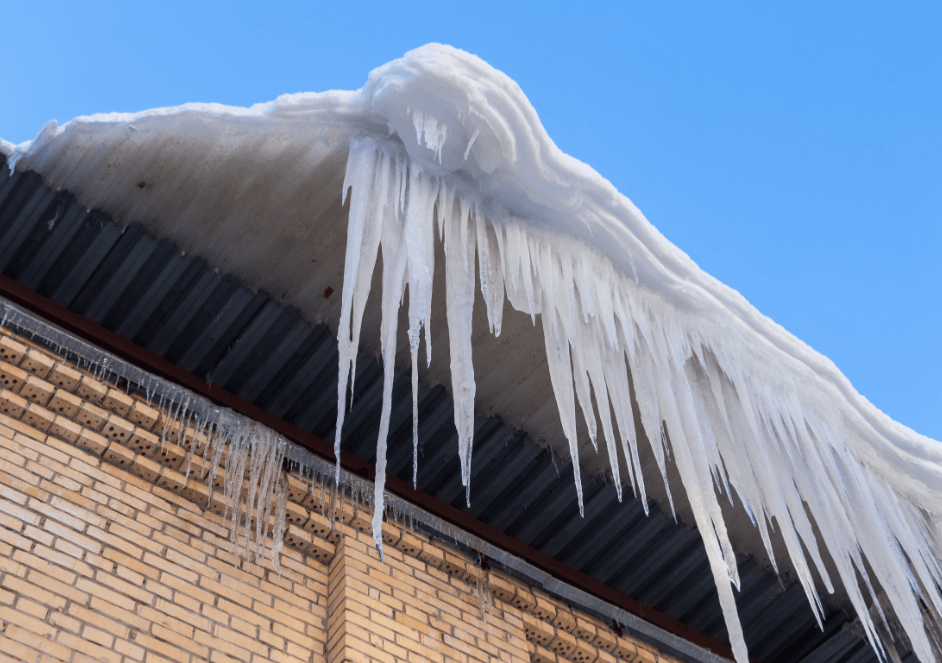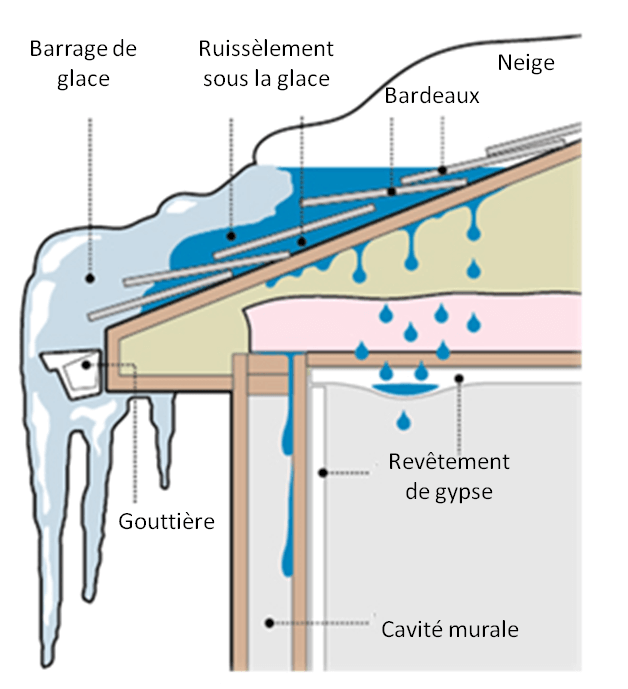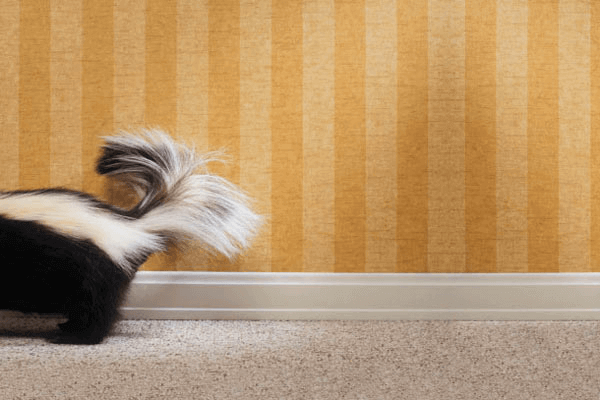During winter, there are certain problems that are obvious to our inspectors even before they…

Ice dam : see what is hiding behind the icicles
It’s winter and you just got back from shopping. Your gaze is attracted to your roof, where the brilliant sun makes the icicles dangling from your gutter glitter with a thousand lights. Suddenly, the enchantment gives way to doubts: is the weight of all this ice likely to tear the gutter? You take a look to the left and right, but none of your neighbors seem to be struggling with such a problem. Discover the causes behind this ice accumulation, that ice dam, and learn how to fix it.
Do you have an ice dam problem on the roof?
Call on our specialists to identify the causes behind the
ice dam on your roof and fix the situation once and for all
Pretty commun, but not well known in our cold province, this phenomenon of ice accumulation on the roof occurs when the temperature of the attic rises above the freezing point. That’s when the situation becomes problematic. The attic air heats up and melts the first layer of snow in contact with the roof. This snow turned into water drains down to the edge of the roof where, since this section is generally not heated, it freezes again. The ice accumulates little by little, layer by layer, to form a structure rightly known under the name of ice dam. When nothing is done to reduce the temperature in the attic the snow continues to melt, but the ice dam prevents the water from draining properly (see diagram below).
This water can then penetrate under the shingles and infiltrate inside the walls where it can cause the formation of mold and damage the integrity of the structure. Let’s illustrate this with a real case on which our experts were called to investigate last year.
Built in 1975, the house had a roof covered with asphalt shingles that the owner had redone twice in the last seven years, because the ice that formed there accelerated greatly its degradation. Wanting to correct the situation, he listens to his brother-in-law’s advice and installs three roof aerators, thinking that ventilating his roof better would solve the situation. Unfortunately, rather than solve the problem, this change made it worse. How is it possible ? Well, the aerators have the effect of sucking air from the attic to the outside. On the other hand, if there are openings in the ceiling, the hot, humid air in the house will be sucked into the attic, which will increase the temperature considerably. With their instruments, our experts have managed to determine the extent of exfiltrations from the living area (plumbing vent, recessed luminaires, around the chimney and even a high wall open directly on the attic). Sitting side by side, they would total an opening of nearly three square feet on the attic, the equivalent of a window open year-round!
Consequences: significant water infiltration resulting in mold growth in the attic and exterior walls.
In this example, the air exfiltration problem between the habitable part and the attic was considerable. If this had not been the case, perhaps the installation of a better ventilation system in the attic would have been enough to resolve the situation. Relying on the recommendations of our experts, the owner had his attic insulated with sprayed urethane, which acts as an air barrier and eliminates leaks from the living area.
Possible causes behind the formation of ice dams are numerous; significant exfiltrations of hot air to the attic, inadequate ventilation, roof configuration, sunshine, lack of insulation or poor evacuation of mechanical fans. Each situation is unique and a conscientious owner should always ask an expert’s opinion before starting work. The latter will be able to identify the source of the problem, make a clear diagnosis and propose appropriate solutions. This will allow the owner to invest his money in the good works and solve the problem once and for all.
If you recognize yourself in this situation, our experts can help you. Contact us by email, on our website through the online chat or on the phone : 514-286-0550. To learn more about the various building problems we can help you with, visit our problem solving page.



